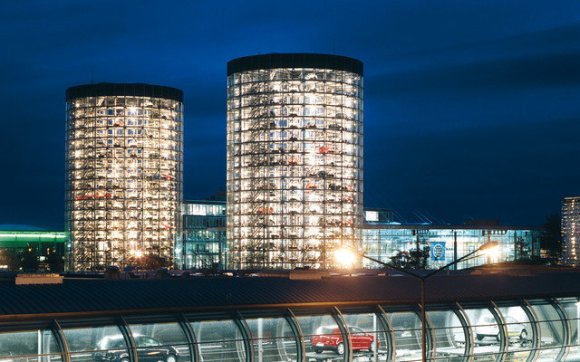
The Autostadt is a visitor attraction adjacent to the Volkswagen factory inWolfsburg, Germany, with a prime focus on automobiles. It features a museum, feature pavilions for the principal automobile brands in theVolkswagen Group, a customer centre where customers can pick up new cars, and take a tour through the enormous factory, a guide to the evolution of roads, and cinema in a large sphere. It is also home to the largest glass doors in the world and the longest printed line. The line starts from outside Wolfsburg and travels through Autostadt to a point on a farm. It is about 4 miles (6.4 km) long.
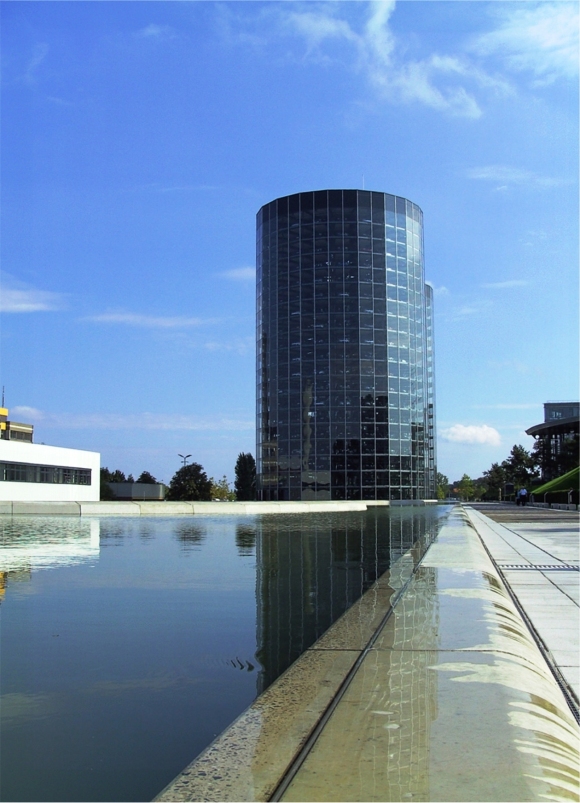
The idea for Autostadt was started in 1994 when the concept of documenting the stages of production of Volkswagen vehicles and how the company's operations were showcased at Expo 2000 in Hanover, Germany. In 1998, Autostadt, which is German for "Car City", broke ground on the former site of a fuel company bordering Volkswagen's Wolfsburg production plant. Like the adjacent car plant, the site of Autostadt is on the north bank of the Mittellandkanal which appears to have inspired considerable creativity in the projects' designers. The resulting complex is the work of more than 400 architects, created as a new urban center, close to downtown Wolfsburg.
The main pavilion opened in May 2000, providing an opportunity to present famous cars hitherto locked in crates to be shown to the public. By that time it was reported that Volkswagen had invested approximately 850 Million Marks (€435 Million) in the project Autostadt is located next to Volkswagen's main factory which is also an attraction. Every Volkswagen model is available giving the opportunity for the public to choose what they want. Volkswagen then manufactures the car specified according to the purchaser's requirements.
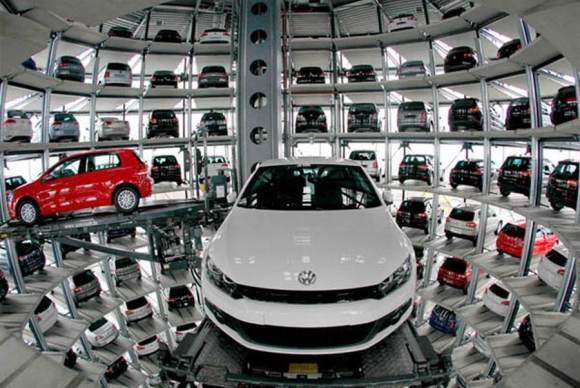
Autostadt attracts around 2 million visitors a year. It is very popular because of the ultra modern architecture it features in each building. Extensive use is made of water and vegetation between the pavilions and mounds of earth covered in grass are located in the grounds. Modern design is not just incorporated into the pavilions but also into the furniture such as benches and chairs.
It has a small track for the off-road Volkswagen Touareg underneath the bridge which leads from the main town to the Autostadt which is located above the main canal cutting through the city, the Mittelland Canal. Visitors must be able to show driver's licenses before being able to drive the vehicles. First, the guide drives the car around the track showing the features of the vehicle and giving information of the vehicle's capabilities. After driving around the track, the visitor can then drive around the track under the surveillance of the guide who sits in the passenger seat. Any other passengers sit in the back. Features of the track include a 21 degree angled hill, another hill which is angled on the side, a water tank, a sand pit which is located under a road bridge, a log road and a numerous small mounds which allow one wheel to be raised off the ground. The price of this runs at about €25 (2005 prices).
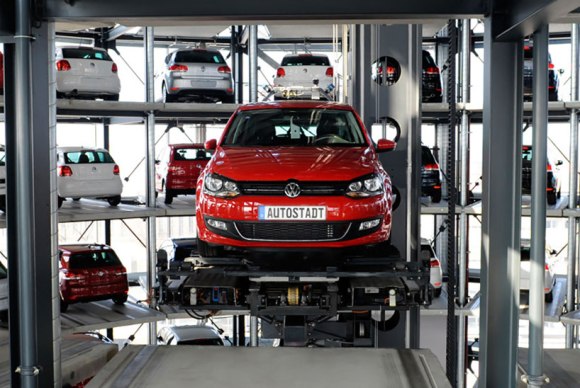
There is a mini track for children where they can drive small electric cars in the form of Volkswagen Beetles.
Autostadt has a large variety of multimedia activities and devices which include car design software. There is a room exhibiting the advantages and disadvantages different fuels have on the performance of cars. There are twocinemas which show small films in German. One of these cinemas is located in its own purpose built buildings and is in a large sphere.
Major attractions are some famous cars, such as the first petrol vehicle produced, and the Beetle.

There are two 60 meter/200 ft tall glass silos used as storage for new Volkswagens. The two towers are connected to the Volkswagen factory by a 700 metre underground tunnel. When cars arrive at the towers they are carried up at a speed of 1.5 metres per second. The render for the Autostadt shows 6 towers. When purchasing a car from Volkswagen (the main brand only, not the sub-brands) in select European countries, it is optional if the customer wants it delivered to the dealership where it was bought or if the customer wants to travel to Autostadt to pick it up. If the latter is chosen, the Autostadt supplies the customer with free entrance, meal tickets and a variety of events building up to the point where the customer can follow on screen as the automatic elevator picks up the selected car in one of the silos. The car is then transported out to the customer without having driven a single meter, and the odometer is thus on "0".
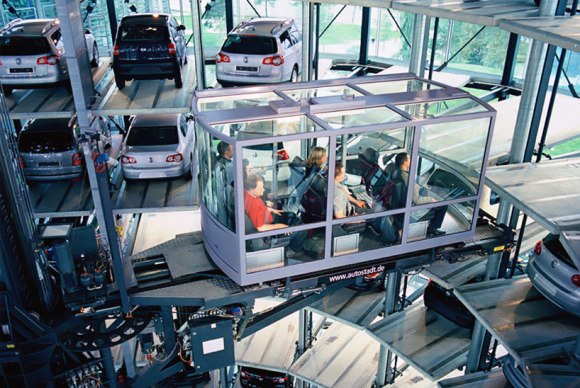
There is also a room with interactive devices which provide information on the design of cars using Audi as an example. Computer software allows visitors to design their own cars using features from Audi cars and send them to an email address and get them printed at the printer located in the centre of the room.
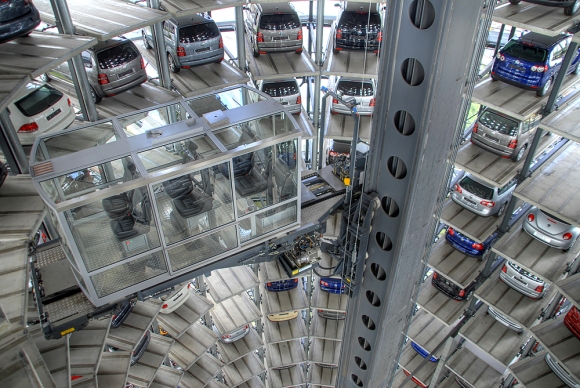
[youtube=http://www.youtube.com/watch?feature=player_embedded&v=rAQ0ewhZWs4]
No comments:
Post a Comment